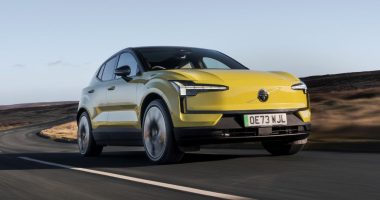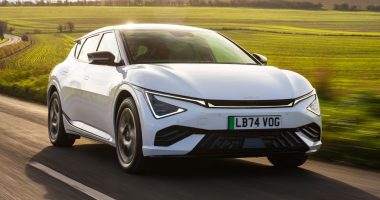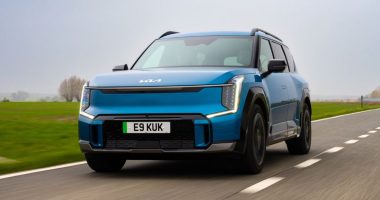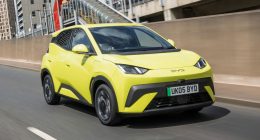Three years after it launched, Honda’s best-selling model in Europe has received an oh-so-subtle makeover to ensure it stays competitive in the crowded compact SUV class.
The changes are not easy to spot, so current owners of the Japanese car should not be too put out by the facelift exercise. In all, the styling tweaks consist of a new grille shape, a new creased front bumper, and all-black trim that is intended to create a purposeful look.
That dark theme is carried across to the fresh LED headlights, which now have a daytime running light signature that is more prominent second time around, while the full-width LED light bar at the rear has been reworked. Again, though, you need to be eagle-eyed to spot these. More obvious are the three fresh premium paint colours buyers can now choose from – ‘Sage Green’, ‘Urban Grey’ and – our personal favourite – ‘Seabed Blue’.
For the 2025-model-year HR-V, Honda has introduced a new ‘Advance Plus’ trim, which is tested here. Joining ‘Elegance’, ‘Advance’ and ‘Advance Style’, it comes with its own special 18-inch alloy wheel design, full length glass roof, and gloss black finish for the lower bumpers, wheelarches, A-pillars and mirror caps, while the slated grille is colour-coded. Overall, the revisions are in keeping with what is a stylish and well-made SUV.
Equally subtle changes have been applied to the HR-V’s cabin, with these majoring on making the most of the space on offer. One previous criticism was access to the wireless charging pad being hindered for the driver and front seat passenger by the contour of the dash – but not anymore. Access is easy, forward visibility is excellent, and the volume of technology on display is reflective of the £37,995 asking price (or £38,645 with options).
However, to save yourself some money, the sensible choice would be to drop a level and go for ‘Advance’ as this guarantees a new multi-view camera, premium audio system and leather/fabric upholstery. A nine-inch colour touchscreen and part-digital driver display come as standard across the range, as does Apple CarPlay and Android Auto compatibility.
All HR-Vs also have keyless entry and start/stop, heated front seats, adaptive cruise control and the easy-to-use (and very clever) ‘Magic Seats’ that allow the rear seat bases to be lifted to create an expansive area for awkward, longer or boxier items to rest on. In this position, you save the 319-litre cargo area or can increase this to 1,289-litres by folding the 60/40 seats forward. It is not the biggest surface area compared to rivals – but at least it is flat.
As this is a purely cosmetic exercise, the engine and running gear that underpins the HR-V has not been tinkered with – and that is a good thing. The system is along the same lines as the e-Power set-up on Nissan’s Qashqai and that means the job of the 1.5-litre i-MMD petrol engine is to generate power for the two electric motors bolted onto the front axle. The set-up produces 129bhp – enough for 0-62mph to be dispatched in under eleven seconds and a claimed 52.3mpg.
It is a well-mannered and easy to live with set-up that is marshalled by a fixed-gear transmission called e-CVT that goes about its business quietly and without major fuss. But one recurring bug bear of the HR-V is how the petrol unit responds to a demand for more power; you feel the energy through the pedals and steering wheel, and the once subtle din heard from inside the cabin becomes a racket. It is just about tolerable when it does occur, and but for the smart use of additional sound deadening materials, could be ever louder.
Another criticism of the HR-V is the driver display. We are not entirely convinced by the halfway house approach Honda has adopted; being partially digital only allows you to change the dial on the left to relay key information, or that which is of most interest, whereas the speedometer immediately opposite is an old-fashioned analogue set-up.
These misgivings are quickly overlooked when out on the open road. Increasing torsional rigidity by as much as 15 per cent over the previous model keeps the HR-V settled and assured in the corners, with accurate steering promoting confidence on turn-in. Extra points go to the steering around town where a responsive action ensures this is an easy car to manoeuvre, whether tootling down narrow streets, reversing into tight parking spaces, or needing to execute a three-point turn when confronted by a dead-end sign. We would welcome some extra polish on the damping front, though, as the suspension has an all too brittle quality when confronted by tatty or badly repaired asphalt.









